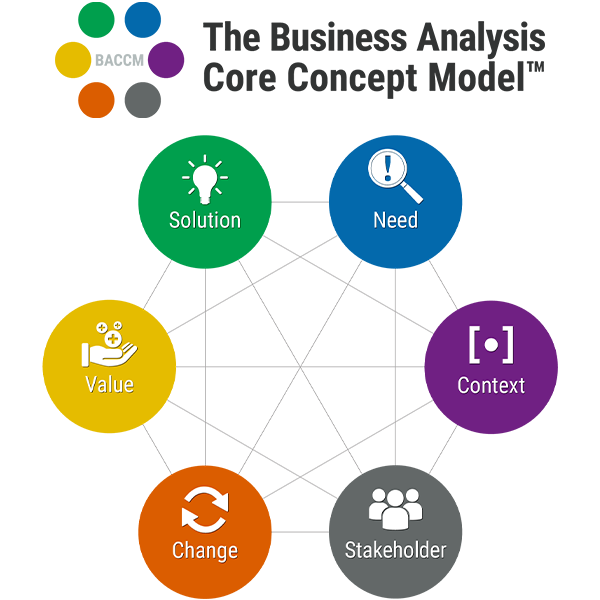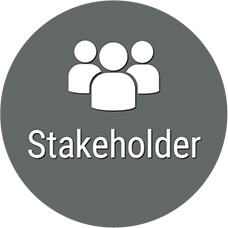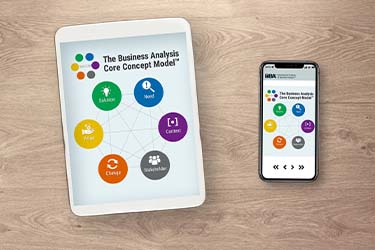
1. Understanding Business Analysis
A Model for Good Analysis - BACCM™
The Business Analysis Standard
The six core concepts highlighted in the definition of business analysis - Change, Need, Solution, Value, Stakeholder, and Context - form a powerful model for effective business analysis, the Business Analysis Core Concept Model™.

Each Core Concept is:
-
a building block for business analysis;
-
equally important and necessary to all the other concepts;
-
defined by the other five and is best understood in relation to the other concepts.
These concepts help understand how the information is elicited, analyzed, and managed in business analysis tasks.
The six core concepts in the BACCM are:

- Change typically works to improve the performance of an enterprise.
- These improvements are managed and completed through business analysis activities.

- Needs can cause changes by motivating stakeholders to act.
- Changes can also cause needs by reducing or increasing the value delivered by existing solutions.

- A solution satisfies a need by:
- resolving a problem faced by stakeholders; or
- enabling stakeholders to take advantage of an opportunity.
- A solution can include a combination of components that deliver the desired value, for example:
- technology-based;
- manual procedures;
- process changes;
- business model updates;
- improving organizational capabilities, etc.

- Stakeholders (both internal and external) are often defined by their interest, impact, and influence over the change.
- Stakeholders are grouped based on their relationship to the needs, changes, and solutions.

- Value can be:
- potential or realized returns, gains, and improvements; or
- avoiding a decrease in value in the form of losses, risks, and costs.
- Value can be tangible or intangible:
- Tangible value is directly measurable and often has a significant monetary component.
- Intangible value is measured indirectly and often has a significant motivational component (e.g., company’s reputation or employee morale).
- Value can be assessed in absolute or relative terms (e.g., one solution option is more valuable than another from the perspective of a group of stakeholders).

Context is everything within the environment relevant to the change, including:
|
|
|
Using the BACCM™
The BACCMTM is a “thinking model” and “organizing model” for effective business analysis. It is used to:
- describe effective and efficient business analysis;
- communicate about business analysis with a common language;
- identify professional development opportunities for individuals;
- perform better business analysis by evaluating the relationships among these six concepts;
- evaluate the impact of these concepts and relationships;
- establish both a foundation and a path forward;
- consider the quality and completeness of work being done.





















